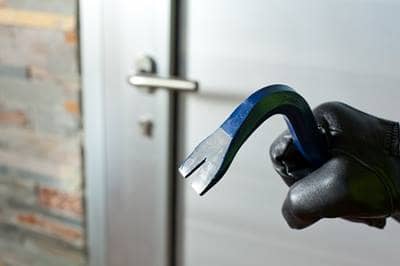Building security

Is your school prepared to close its campus for a few weeks and return to the property in the condition you left it? Are there security measures lacking which increase the likelihood of crime and vandalism to your property?
There are three categories that school break-ins typically fall into including:
-
Nuisance break-ins
- Typically youthful students whose goal is to enter a closed school
-
Professional break-ins
- Often crimes by adults seeking items of value to sell on the streets
-
Malicious break-ins
- Commonly students acting out with the purpose to cause high dollar damages but they take little of value
Each type of break-in results in different short term levels of monetary damage to the school, but over time even multiple nuisance break-ins can add up to large costs.
Reducing the risk of school break-ins requires intentional planning on the part of administrators.
Some factors contributing to school vandalism and break-ins include:
- Student offender characteristics
- Motivation to damage
- Time
- Targets
If your school has been the target of break-ins or vandalism in the past there is a higher probability the school will be targeted again. Addressing offender issues as well as physical issues are both necessary to reduce the risk of future incidents.
Discourage vandals by:
- Increasing security patrols
- Installing closed circuit television
- Reducing sight barriers and hiding places
- Holding offenders accountable when they can be identified and apprehended
- School education on vandalism prevention and campaigns within the schools to encourage reporting of vandals and protection of school property
Physical factors also contribute to vandalism and break-ins including:
- Entry access
- Warning signs
- Use of cameras
- Storage of valuables
- Interior and exterior lighting
- Physical barriers
- Quickly repairing damage.
When entry areas are hidden by trees or building structures these areas are often targeted for break-ins due to the ability of the perpetrator to hide while trying to gain access. Motion detection lighting is still an effective deterrent on some campuses to reduce the incidents of vandalism.
In order to succeed in reducing these types of crimes against school property school administrators must evaluate the problem, create a plan to address the problem, and involve the school, the community, and police in their plan

This "document” is intended for general information purposes and should not be construed as advice or opinions on any specific facts or circumstances. The content of this document is made available on an “as is” basis, without warranty of any kind. This document cannot be assumed to contain every acceptable safety and compliance procedure or that additional procedures might not be appropriate under the circumstances. Markel does not guarantee that this information is or can be relied on for compliance with any law or regulation, assurance against preventable losses, or freedom from legal liability. This publication is not intended to be legal, underwriting, or any other type of professional or technical advice. Persons requiring advice should consult an independent adviser or trained professional. Markel does not guarantee any particular outcome and makes no commitment to update any information herein, or remove any items that are no longer accurate or complete. Furthermore, Markel does not assume any liability to any person or organization for loss or damage caused by or resulting from any reliance placed on this content.
Markel® is a registered trademark of Markel Group Inc.
© 2023 Markel Service, Incorporated. All rights reserved.
